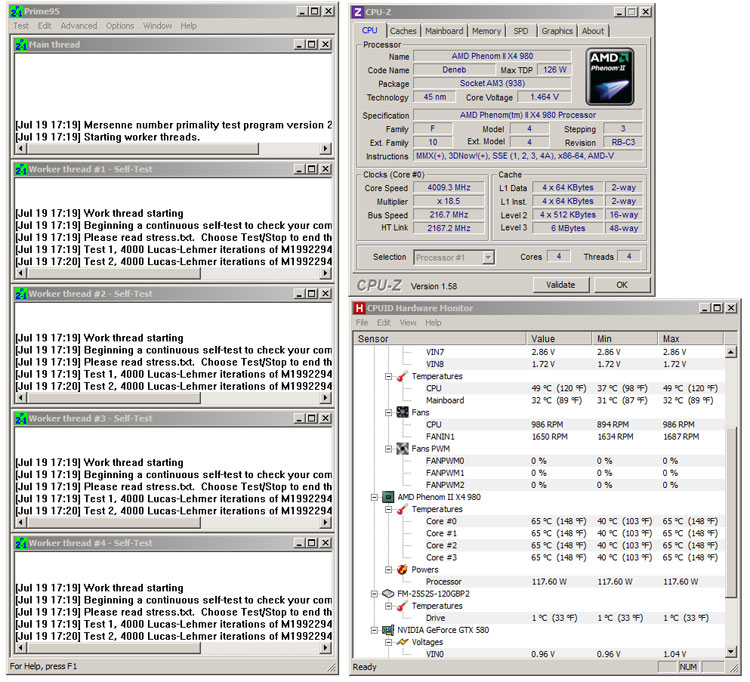Overclocking with a Formula
Overclocking with a Formula
If you decide to start an overclocking session with the Phenom II processors, typically you are much better off with the BE versions (CPU multiplier unlocked).

As explained the motherboard has an overclock button, when powered off we can press it, then after turning the PC back on an automated overclock will be active for you. After the post we see this:

Not bad, as you can observe we get an instant overclock towards 4000 MHz on all the processor cores. But lets focus on manual overclocking that Phenom II X4 980 BE. This processor has an unlocked multiplier.
Alternatively you can use AMD's Windows compatible OverDrive interface that allows for very easy overclocking of the Phenom II processor. The latest revision is one of the best CPU tweak utilities out there.
In AMD OverDrive you can simply max out the CPU voltage towards 1.50 ~1.55V and increase the multiplier. Play around with it, don't be afraid of a crash. Now what you can do best with AMD OverDrive is determine how high you can overclock and then transfer the final stable settings into the bios to make it permanent (if you would to of course).
Regardless of the coolness that is AMD OverDrive, we however overclocked manually through the BIOS -- the results were really dandy as we took it to 4.3 GHz quite easily -- and again, this overclock was managed with a simple OCZ Vendetta air-cooler.

Here's an overclock at 4300 MHz 100% stable. in the end we boosted CPU Voltage towards 1.5v in the BIOS and simply applied a multiplier of 21.5 versus a bus speed of 200 MHz. Temperatures are now higher, but really acceptable. Again, and I can't stress this enough -- we are only using a 35 USD air based Vendetta cooler here, nothing fancy.
One word of advice, AMD processors start to really consume a lot of power once you overclock them and add voltage. At ~4300 MHz (all cores stressed) we consumed roughly 290 Watts (peak).
